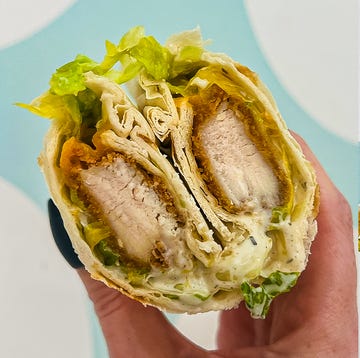Major food companies are saying goodbye to artificial dyes, and it’s a huge moment for the industry. Kraft Heinz—known for icons like Kool-Aid and Jet-Puffed—is pledging to ditch all petroleum-based food dyes from its U.S. products by the end of 2027. This move aligns with the U.S. Department of Health and Human Services’ goal to remove artificial ingredients from our food supply. But let’s be real—will it mess with the flavors we love? Those marshmallows are basically perfect, IMO.
"We’ve been on a journey to reduce our use of [Food, Drug & Cosmetic colors] across the remainder of our portfolio. In fact, we removed artificial colors, preservatives, and flavors from our beloved Kraft Mac & Cheese back in 2016. Our iconic Heinz Tomato Ketchup has never had artificial dyes," Pedro Navio, the North America President at Kraft Heinz, said in a statement. That said, fan favorites like Jell-O, Crystal Light, Kool-Aid, and Jet-Puffed still contain FD&C colors.
It’s not just Kraft Heinz making changes. Many other major food brands have also been quietly phasing out artificial dyes in recent years, reflecting a growing industry-wide push toward "cleaner" ingredients. Here’s a closer look at the brands making moves and what it might mean for your favorite snacks.
Nestlé USA
Nestlé USA announced earlier this year that the goal is to eliminate all FD&C colors from its food and beverage products by mid-2026. Although the company didn’t specifically state which of its offerings currently include synthetic colors, the list of Nestlé USA brands includes Lean Cuisine, Nestlé Toll House, Nesquik, and Nespresso.
"As [our consumers'] diverse dietary preferences and nutritional needs evolve, we evolve with them," Marty Thompson, the CEO of Nestlé USA, said in a said in a statement.
Nestlé USA explained that the decision to remove FD&C colors aligns with their refinement of recipes over the years, focusing on nutrient-rich ingredients and adding more low- and no-sugar product options.
Products that may be affected: Smarties, KitKats, Lean Cuisine, Stouffer’s, Nestlé Toll House, Nesquik, Nespresso, Häagen-Dazs, and more.
J.M. Smucker
J.M. Smucker followed suit with the removal of artificial dyes, announcing that it plans to remove FD&C colors from certain products by the end of 2027. As part of the project, the company is also working with its distribution partners to stop selling products with FD&C colors to K-12 schools by the end of the 2026/2027 school year.
Mark Smucker, the CEO of J.M. Smucker and chair of the board, revealed that products including the company’s sugar-free fruit spreads, ice cream toppings, and select items from its Hostess line will be affected.
"Our commitment to remove FD&C colors from our sugar-free fruit spreads, ice cream toppings, and sweet baked goods products represents the latest example of our desire to evolve and our ability to continue to innovate to deliver on the expectations of our consumers," Smucker said in a statement.
Products that may be affected: sugar-free fruit spreads, ice cream toppings, and select items from Hostess.
General Mills
General Mills, which makes the brands Betty Crocker, Trix, Fruit Roll-Ups, and Yoplait, is one of the latest food giants to remove certified colors from its portfolio. The proposal includes removing artificial colors from all cereals in the U.S., all K-12 school foods, and from its entire U.S. product collection.
"General Mills has moved quickly to meet evolving consumer needs, and reformulating our product portfolio to remove certified colors is yet another example," read a statement from Jeff Harmening, the chairman and CEO of General Mills.
Products that may be affected: Betty Crocker, Trix, Lucky Charms, Reese's Puffs, Fruit Roll-Ups, Gushers, Fruit by the Foot, Yoplait, and more.
Are Artificial Food Dyes Safe?
Artificial food dyes are primarily used to enhance the color of food and beverages, making them more visually appealing. Essentially, the addition of these synthetic dyes doesn’t contribute much to the overall flavor of food and drink. So there's no need to worry about your favorite food products losing their signature taste.
The Food and Drug Administration generally states that artificial food dyes are safe in small amounts. However, some reports claim that artificial food dyes pose potential health effects. For example, a 2012 study published in the International Journal of Occupational and Environmental Health found that Red Dye 3 caused cancer in laboratory animals. Other studies suggest artificial food dyes can increase hyperactivity in children, especially those experiencing attention-deficit/hyperactivity disorder (ADHD).
However, these claims haven't been widely confirmed, and many scientists note that the adverse effects of artificial dyes depend on the dosage. Additionally, the FDA maintains its stance on the safety of artificial food dyes.
"The FDA has reviewed and will continue to examine the effects of color additives on children’s behavior. The totality of scientific evidence indicates that most children have no adverse effects when consuming foods containing color additives, but some evidence suggests that certain children may be sensitive to them," a statement on the FDA's official website reads.
While this change might not alter the flavor of your favorite snacks (or make ultra-processed foods more nutritious), it’s clear that brands are paying attention to what consumers want. As these changes roll out, one thing’s for sure: The snack aisle is going to look a lot different.













